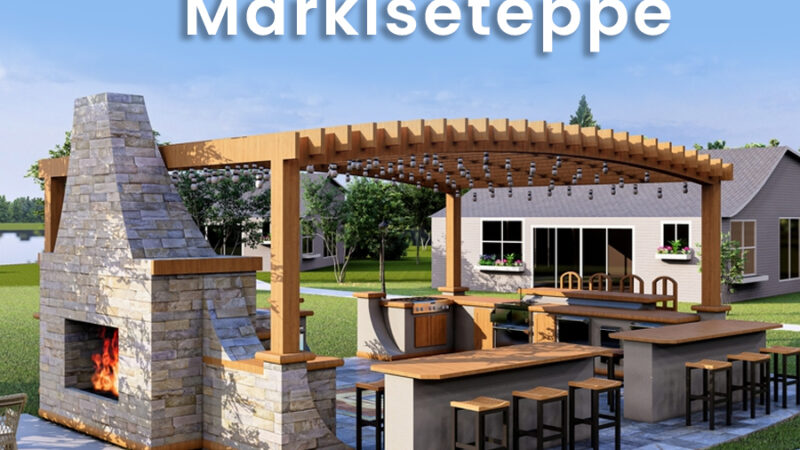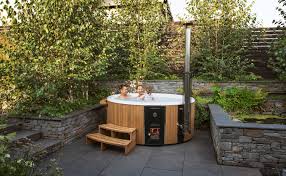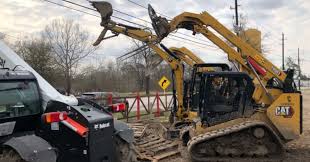What Is the Difference Between a Cabin and a House?
Table of Contents
Introduction
When it comes to choosing a place to call home, the options can feel endless. Two popular choices that often come up in conversation are cabins and houses. Both offer unique lifestyles, but what sets them apart? If you’ve ever wondered about the differences between these two types of dwellings, you’re not alone. Whether you’re dreaming of a cozy retreat in the woods or envisioning life in a spacious suburban neighborhood, understanding what defines a cabin versus a house is essential. Let’s dive into their distinct characteristics and explore which one might suit your lifestyle best!
Definition of a Cabin
A cabin is typically a small, simple dwelling. Often nestled in nature, it exudes charm and rustic appeal. These structures have an intimate connection to the outdoors.
Historically, cabins originated as humble shelters for pioneers and settlers. Made from timber or logs, they were practical spaces designed for living close to natural resources.
Cabins often emphasize functionality over luxury. They feature basic amenities and are sometimes off-grid, allowing inhabitants to embrace a simpler lifestyle.
The cozy interiors usually include wood-burning stoves and large windows that invite the surrounding landscape inside. This design fosters a sense of tranquility and closeness with nature.
Whether built as vacation homes or permanent residences, cabins hold a special place in many hearts for their warmth and character.
A. History and Origins of Cabins
Cabins have deep roots in human history, often seen as the original shelter for early settlers and indigenous peoples. These humble structures emerged from the need for warmth and protection against the elements.
The first cabins were typically built using local materials like logs and stones. Their designs were simple yet functional, reflecting a lifestyle closely tied to nature. As communities grew, cabins evolved into more sophisticated forms but retained their rustic charm.
In many cultures, cabins symbolize retreat and simplicity. They became popular among those seeking solace in nature or a break from city life during the 19th century. This trend continues today with modern interpretations that blend traditional aesthetics with contemporary living standards.
Understanding this rich history enriches our appreciation of what cabins represent—a connection to both our past and the natural world around us.
B. Characteristics of a Cabin
Cabins are often characterized by their rustic charm and simplicity. They typically feature wooden structures, which provide a warm and inviting atmosphere. The use of logs or timber gives cabins a natural aesthetic that blends seamlessly with outdoor surroundings.
Space is usually used efficiently in cabins. Many designs prioritize functionality over extravagance, making them cozy and manageable. Open layouts create an airy feel, while large windows allow for abundant natural light.
One striking characteristic is the connection to nature. Cabins are often situated in scenic locations like forests, mountains, or near lakes. This proximity encourages outdoor activities such as hiking or fishing right at your doorstep.
Interiors tend to be minimalistic yet comfortable, featuring essential furnishings that enhance relaxation rather than cluttering the space. Fireplaces are common elements too, adding warmth and character during chilly evenings spent indoors.
Definition of a House
A house is typically defined as a structure that provides living space for individuals or families. It serves as a home, offering shelter and comfort in various climates.
Historically, houses have evolved significantly from simple dwellings made of natural materials to complex architectural designs. Throughout the ages, they have reflected cultural values and technological advancements.
Characteristics of houses often include multiple rooms designed for specific purposes—bedrooms, bathrooms, kitchens, and living areas. Many modern houses also incorporate features like garages and basements.
Houses can range widely in style—from traditional to contemporary—and are built using diverse materials such as wood, brick, concrete, or steel. This variety allows homeowners to express personal tastes while ensuring functionality.
A. History and Origins of Houses
Houses have been an essential part of human life for thousands of years. Early dwellings emerged from practical needs, providing shelter from the elements and safety from predators. Archaeological evidence shows that some of the earliest houses were made from natural materials like mud, stone, or animal hides.
As societies evolved, so did the concept of home. The advent of agriculture led to more permanent structures as people settled in one place. These early homes often reflected cultural values and social hierarchies.
By ancient times, civilizations such as the Romans and Greeks expanded architectural designs. They introduced innovations like brick-making and complex layouts that paved the way for modern housing styles we see today.
The Industrial Revolution marked a significant shift in house construction with mass production techniques. This era brought about various housing forms catering to diverse lifestyles and preferences across urban landscapes worldwide.
B. Characteristics of a House
A house typically boasts a structured design with multiple rooms. These spaces can include bedrooms, bathrooms, living areas, and kitchens, each serving distinct purposes. This separation enhances privacy and functionality.
Most houses are built for year-round living. They often come equipped with modern amenities like heating and air conditioning systems to ensure comfort in all seasons.
Material choices vary widely but commonly include brick, wood, or concrete. This diversity allows for various architectural styles ranging from contemporary to traditional.
Houses usually sit on larger plots of land compared to cabins. This provides room for gardens or outdoor recreational spaces that extend the living area beyond four walls.
In urban settings, houses may be part of a community with shared facilities like parks or pools. In rural areas, they might offer expansive views and proximity to nature while still maintaining essential services nearby.
Comparison between Cabins and Houses
When comparing cabins and houses, size and layout often come into play. Cabins tend to be smaller, designed for simplicity and ease of maintenance. They typically feature an open floor plan that promotes a cozy atmosphere.
On the other hand, houses can vary greatly in size and complexity. From compact bungalows to sprawling estates, they offer more options for different lifestyles.
Materials used also differ significantly. Cabins often utilize natural resources like wood or stone to blend with their surroundings. This gives them a rustic charm that many find appealing.
Conversely, houses are constructed with a variety of materials including brick, concrete, and steel. This allows for greater architectural diversity but may lack the intimate feel of a cabin.
Location is another key factor in this comparison. Cabins are usually nestled in serene environments away from urban life while houses might be found in bustling neighborhoods or suburban settings.
A. Size and Layout
When comparing cabins and houses, size and layout play a crucial role. Cabins often embrace a cozy charm. They typically range from small, single-room structures to larger retreats that can accommodate families. Open floor plans are common, promoting a sense of togetherness.
On the other hand, houses usually offer more space and varied layouts. You might find multiple bedrooms, bathrooms, and distinct living areas designed for comfort and privacy. This versatility makes them suitable for different lifestyles.
Cabins tend to maximize their smaller footprint by incorporating multi-functional spaces like lofts or porches. Houses provide more options in terms of room divisions and overall design aesthetics.
The choice between cabin vs house largely depends on personal preference regarding space utilization and lifestyle needs. Whether you lean toward the simplicity of a cabin or the expansiveness of a house determines how you’ll experience your living environment.
B. Materials Used
Cabins and houses differ significantly in the materials used for construction.
Cabins traditionally utilize natural resources such as wood, stone, and sometimes straw or clay. These materials harmonize with nature, enhancing the rustic charm that defines a cabin’s aesthetic appeal. Logs are often stacked to form walls, offering both insulation and character.
On the other hand, houses typically incorporate a broader range of building materials. Wood framing is common but may be combined with brick, concrete, or steel for durability and strength. These choices allow for diverse architectural styles.
The choice of material impacts not just appearance but also energy efficiency and maintenance needs. While cabins evoke coziness through organic textures, houses provide versatility tailored to various climates and lifestyles. Each option has its own unique benefits based on preference and purpose.
Choosing the Right Type of
Choosing the right type of dwelling—whether a cabin or a house—depends on your lifestyle and preferences. If you cherish nature, solitude, and simplicity, a cabin might be the perfect fit for you. Cabins often provide an escape from the hustle and bustle of city life, allowing you to immerse yourself in serene surroundings.
On the other hand, if comfort and convenience are at the top of your list, a traditional house may suit your needs better. Houses usually offer more space and modern amenities that cater to family living or entertaining guests.
Think about what matters most to you: Is it proximity to outdoor activities? Or is it having access to urban conveniences? A thorough consideration of these factors can guide you toward making an informed decision between cabin vs house. Your ideal home should reflect not only where you live but how you want to live as well.





